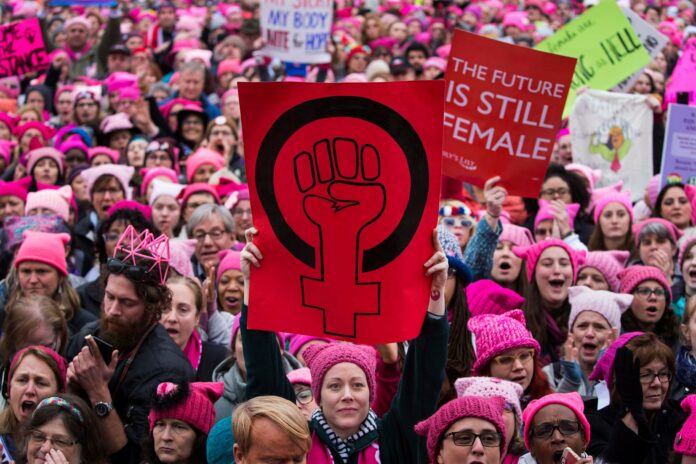Women’s rights activists have long been at the forefront of social justice movements, advocating for equality and challenging entrenched patriarchal norms that perpetuate gender-based discrimination. This article delves into the multifaceted objectives of these activists, highlighting key areas of concern, aspirations for societal change, and the means through which they seek to achieve their goals.
Understanding the breadth of women’s rights activism necessitates an examination of its historical context. The fight for women’s rights has evolved through various waves, each encapsulating distinct struggles—from suffrage and reproductive rights to contemporary issues like gender-based violence and workplace inequality. From grassroots organizations to international coalitions, a shared commitment to the principles of equality, dignity, and justice connects them all.
One critically significant area of activism focuses on dismantling systemic discrimination. Activists strive to confront the structural barriers faced by women in myriad spheres of life, encompassing education, employment, and political representation. This section elucidates the underlying issues related to systemic gender inequality.
The quest for equitable access to education remains a paramount focus for women’s rights advocates. Education is not only a fundamental human right but also a potent catalyst for societal change. Activists assert that ensuring girls’ access to quality education is imperative in breaking the cycles of poverty and disenfranchisement. They contend that educated women are better equipped to make informed choices about their lives and are more likely to participate actively in political and economic spheres.
Concurrently, the fight for labor rights has garnered significant attention. Women often face wage disparities, limited career advancement opportunities, and exploitation within the workforce. Activists argue for the implementation of equitable pay legislation, workplace protections, and family-friendly policies that accommodate women’s dual roles as caregivers and professionals. These changes are essential for creating a workforce that values women’s contributions and ensures their economic security.
Political activism also plays a crucial role in advancing women’s rights. Advocates emphasize the importance of increasing female representation in governance and decision-making processes. Women’s perspectives are essential for crafting policies that address unique challenges and foster comprehensive societal progress. Activists call for initiatives that promote women’s political participation, such as mentorship programs and campaign training, to empower the next generation of female leaders.
Gender-based violence stands as a dire issue that necessitates immediate attention. Women’s rights activists are relentless in their efforts to combat this pervasive problem. They advocate for stricter laws and protective measures for survivors, alongside comprehensive support systems including counseling and legal aid. Furthermore, education and public awareness campaigns are crucial in changing societal attitudes and norms that perpetuate violence against women. Activists argue that fostering a culture of consent and respect is imperative for effectively addressing and ultimately eradicating gender-based violence.
Intersectionality emerges as an essential concept in contemporary women’s rights activism. Advocates recognize that women’s experiences are not homogenous; factors such as race, class, sexuality, and nationality intersect to create unique challenges and forms of discrimination. This acknowledgment leads to more inclusive movements that embrace diversity, ensuring that the voices of marginalized women are heard and prioritized.
Activists also champion reproductive rights, asserting that women should have control over their own bodies and reproductive choices. The fight for access to safe and legal abortion services, contraceptives, and comprehensive sex education are crucial elements of women’s rights advocacy. Proponents argue that reproductive autonomy is intrinsically linked to women’s empowerment, as it allows them to determine the trajectory of their lives without the burden of unwanted pregnancies or health complications.
The digital age has spurred the evolution of women’s rights activism. Online platforms have emerged as powerful tools for mobilization, education, and awareness-raising. Social media campaigns amplify marginalized voices, facilitating global conversations about women’s rights issues. Activists utilize technology to organize protests, share personal stories, and connect with others who share their passion for equality. This digital landscape provides unprecedented opportunities for community-building and the dissemination of knowledge.
Despite the progress made, there remain substantial obstacles to achieving women’s rights. Pushback against feminist movements is prevalent, often manifesting in the form of backlash or co-optation. Activists are acutely aware of these challenges and employ strategic approaches to counteract them. They engage in dialogue with skeptics, seeking to educate and create bridges of understanding, recognizing that dismantling prejudice requires empathy and alliance-building.
The importance of allyship cannot be overstated. While women’s rights activists lead the charge, they often collaborate with individuals and groups across various sectors to amplify their impact. Engaging men as allies is particularly vital in challenging patriarchal norms and fostering a culture of gender equality. The collective effort serves to dismantle obstacles that impede progress and creates a robust movement that resonates with diverse audiences.
Additionally, feminist activism aims to influence public policy at national and international levels. Policymakers are urged to create comprehensive frameworks that protect women’s rights and promote gender equality. Activists advocate for the ratification and implementation of international treaties, such as the Convention on the Elimination of All Forms of Discrimination Against Women (CEDAW), which outlines essential human rights standards for women globally.
In summary, the agenda of women’s rights activists is extensive and multifaceted, encompassing a wide range of issues that demand urgent attention and action. Their aspirations include achieving equitable access to education and labor, eradicating gender-based violence, and advocating for reproductive rights while promoting intersectionality within the movement. As such, they challenge societal norms, dismantle systemic barriers, and cultivate inclusive communities committed to justice.
This ongoing struggle requires the engagement of diverse stakeholders, including policymakers, community leaders, and allies across all genders. The global community must recognize the intersectional dimensions of women’s rights and work collaboratively toward a future where equality is not merely an aspiration but a lived reality for all women, irrespective of their background or circumstances.





























